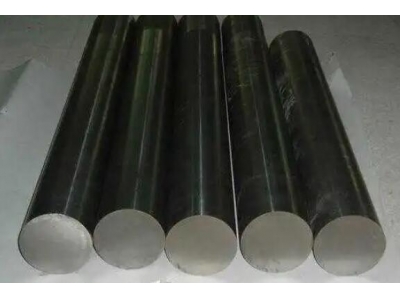房门安装详细尺寸误差?
一、房门安装详细尺寸误差?
洞口尺寸与门实际尺寸差5厘米左右。
不同领域的门洞和门尺寸有差异,正常卧室门的宽度为80厘米,高度的是200厘米,而门洞则要考虑到门套的预留大小,因此宽度为86厘米,而高度为230厘米。
二、石材尺寸误差标准
石材尺寸误差标准
石材在建筑和装饰行业中扮演着重要的角色,因其优美的外观和坚固的特性而备受青睐。然而,在加工和安装石材时,尺寸误差是一个常见的问题。为了确保石材产品的质量和客户的满意度,制定和遵循石材尺寸误差标准是至关重要的。
石材尺寸误差标准是根据国际标准和相关行业规范制定的,旨在规范石材加工和安装过程中的尺寸误差范围。这些标准通常涉及石材的厚度、长度、宽度和平整度等方面的测量和容许误差。
石材厚度误差
石材厚度误差是指在制造和加工石材时,由于生产工艺或其他因素而导致的厚度不一致的问题。根据石材的用途和规格要求,厚度误差的允许范围可以有所不同。
一般情况下,对于石材的厚度误差,国际标准通常规定了两个方面的测量和允许误差:平均厚度误差和局部厚度误差。
平均厚度误差是指石材整体厚度与理论厚度之间的差异,而局部厚度误差是指石材表面不平整或存在凸起或凹陷等问题。根据不同的用途和规格要求,这些误差的允许范围可以在国际标准中找到。
石材长度和宽度误差
除了厚度误差外,石材长度和宽度的误差也是一个需要关注的问题。在制造和加工过程中,由于切割和加工等因素,石材的长度和宽度可能会有一定的误差。
石材长度和宽度误差同样需要遵循国际标准和相关行业规范的规定。这些标准通常涉及石材长度和宽度的测量方法、允许误差范围以及对不同规格石材的具体要求。
石材平整度误差
石材平整度是指石材表面的平整程度,也是石材质量的重要指标之一。石材平整度误差通常由制造和加工过程中的凸起、凹陷、弯曲等问题引起。
为了确保石材的平整度符合要求,国际标准和相关行业规范规定了石材平整度的测量方法和允许误差范围。根据不同的石材类型和应用领域,这些要求可能会有所不同。
石材尺寸误差的影响
石材尺寸误差对建筑和装饰项目的影响是不容忽视的。如果石材尺寸误差超出了允许范围,可能会给项目的安装和施工带来一系列问题。
首先,尺寸误差可能导致石材之间的间隙过大或过小,影响整体的美观和质感。其次,过大的尺寸误差可能导致石材无法正确安装,增加施工的复杂性和困难度。此外,尺寸误差还可能对石材的强度和稳定性产生负面影响。
因此,制定和遵循石材尺寸误差标准是非常重要的。通过遵循标准,可以确保石材产品的质量和一致性,减少施工和安装过程中的问题。
结论
石材尺寸误差标准是建筑和装饰行业中必不可少的规范之一。通过规定石材厚度、长度、宽度和平整度等方面的测量和允许误差范围,可以确保石材产品的质量和稳定性。
对于石材制造商和安装施工方来说,遵循石材尺寸误差标准是关键,可以提高工作效率和客户满意度。
因此,建议石材行业的相关企业积极了解和遵循石材尺寸误差标准,根据项目需求选择适合的石材产品,并与供应商和施工方密切合作,确保石材产品的质量和尺寸符合要求,从而为客户提供高质量的建筑和装饰解决方案。
This blog post discusses the issue of dimensional tolerances in stone materials (石材尺寸误差标准) commonly used in the construction and decoration industry. The post emphasizes the importance of adhering to industry standards and outlines the standards for thickness, length, width, and flatness measurements, while also highlighting the potential implications of dimensional discrepancies. The article begins by acknowledging the significant role stone materials play in construction and decoration due to their aesthetic appeal and durable characteristics. However, it points out that dimensional tolerances often pose challenges during the processing and installation of stone materials. To ensure the quality of stone products and customer satisfaction, following and implementing dimensional tolerance standards is crucial. The blog post explains that dimensional tolerance standards are established based on international standards and relevant industry regulations to regulate the range of dimensional discrepancies during the processing and installation of stone materials. These standards cover various aspects, such as thickness, length, width, and flatness, and provide guidelines for measurement and permissible tolerances. The topic of dimensional thickness errors is further discussed, highlighting the average thickness error and the local thickness error. The average thickness error refers to the difference between the overall thickness of the stone and the theoretical thickness, while the local thickness error encompasses issues such as surface irregularities, projections, or depressions. The standards outline the permissible tolerance range for these errors, which may vary depending on the specific application and specifications of the stone material. In addition to thickness errors, the article addresses the importance of considering dimensional errors in length and width. The cutting and processing procedures can introduce certain discrepancies in these dimensions, necessitating adherence to international standards and industry regulations. The article emphasizes the measurement methods, permissible tolerance ranges, and specific requirements for different stone material specifications. The post also highlights the significance of dimensional flatness errors, which refer to the smoothness and uniformity of the stone surface. Due to factors such as protrusions, depressions, or bending, dimensional flatness errors can arise during manufacturing and processing. International standards and industry regulations provide methods for measuring flatness and specify permissible tolerance ranges. It is noted that these requirements may differ based on stone material types and applications. Furthermore, the article delves into the potential impact of dimensional errors on construction and decoration projects. Exceeding the permissible tolerance range can result in gaps between stones that are either too large or too small, negatively impacting aesthetics and texture. Moreover, significant dimensional errors can make correct stone installation unattainable, increasing the complexity and difficulty of construction. These errors may also have adverse effects on the strength and stability of the stone material. To conclude, the blog post emphasizes that adhering to dimensional tolerance standards is essential in the construction and decoration industry. By defining the measurement and permissible tolerance ranges for stone thickness, length, width, and flatness, these standards ensure the quality and stability of stone products. Manufacturers and construction professionals are urged to follow these standards to enhance work efficiency and customer satisfaction. Finally, the article recommends that relevant companies in the stone industry actively familiarize themselves with and adhere to dimensional tolerance standards. It advises choosing suitable stone products based on project requirements, closely collaborating with suppliers and construction professionals to ensure that stone products meet quality and dimensional requirements. This collaborative approach ultimately enables the provision of high-quality architectural and decorative solutions to customers.三、窗户安装尺寸误差是多少?
门窗槽口宽度、高度≤1500mm。偏差:1.5mm。>1500mm:偏差2mm。
2,门窗槽口对角线长度差≤2000mm,偏差3mm。>2000mm,偏差4mm
3,门窗框的正、侧面垂直度,偏差2.5
4,门窗横框的水平度,偏差2mm
5,门窗横框标高,偏差5mm
6,门窗竖向偏高中心,偏差5mm
7,双层门窗内外框间距,偏差4mm
8,推拉门窗扇与框搭接量,偏差1.5mm
四、抽屉滑道安装误差尺寸是多少?
抽屉滑道安装误差尺寸是,2毫米误差。这个尺寸是误差范围。例如宽40公分的抽屉,少2毫米误差为39.8公分。
五、冶金设备有哪些?
冶金设备有浇铸机、钢坯连铸机、电磁搅拌设备、造型设备、制芯设备等。
六、有没有冶金设备?
在冶金工业的的冶炼、铸锭、轧制、搬运和包装过程中使用的各种机械和设备。又称冶金设备。
在冶金工业的的冶炼、铸锭、轧制、搬运和包装过程中使用的各种机械和设备。又称冶金设备。冶金过程工艺复杂,相应的冶金机械的特点是结构庞大、能耗大、生产连续化、设备成套性强。冶金机械大多在高温、多尘、重载和有腐蚀的条件下持续工作,须满足高效、可靠、完全、耐用和节能等要求。
七、常见的冶金设备?
常见冶金设备包括:
①冶炼机械。包括火法冶金机械和湿法冶金机械。前者有高炉、平炉、转炉、电弧炉、电子束熔炼炉、等离子熔炼炉、电解溶炼槽、炉外精炼设备、铸锭设备、冶金车辆、沸腾焙烧炉、回转窑、鼓风炉、反射炉、闪速炉、旋涡炉等及其配套机械;后者有萃取器、电解设备、高压釜、过滤机、离心分离机等。
②加工机械。包括轧延机械、挤压机械、拉拔机械和拉丝制绳机械。轧延机械包括开坯机、型材轧机、轨梁轧机、线材轧机、板材轧机、带材轧机、箔带轧机、无缝管轧机、铜板轧机等。
③辅助设备。包括耐火材料机械、炼焦机械、起重运输机械、烧结设备、热处理设备和各种加热炉等。
八、吸顶灯尺寸误差率
吸顶灯尺寸误差率:从设计到制造
吸顶灯,作为家庭照明的重要组成部分,既能为房间提供光线,又能起到装饰作用。然而,当我们购买吸顶灯时,是否注意到了吸顶灯的尺寸误差率呢?尺寸误差率是指吸顶灯尺寸与设计尺寸之间的差异程度。下面,我们将从设计到制造的角度,探讨吸顶灯尺寸误差率的重要性以及如何降低误差率。
1. 设计阶段
在设计阶段,我们必须非常关注吸顶灯的尺寸参数。尺寸参数包括直径、高度、重量等,这些参数直接影响到吸顶灯的外观和安装。在设计吸顶灯尺寸时,需要参考相关标准,并根据用户需求进行调整。同时,对于不同尺寸的吸顶灯,需要进行尺寸误差率的评估。
尺寸误差率评估是通过对各种因素进行测量和分析来实现的。在设计阶段,可以利用三维建模软件进行模拟和计算,从而减少尺寸误差率。通过精确测量和计算,可以避免在后续制造过程中出现较大的尺寸误差。
2. 制造阶段
一旦设计阶段完成,接下来是制造吸顶灯的过程。制造阶段是尺寸误差率最容易出现的阶段之一。由于制造过程中存在各种因素,比如人为操作、设备精度等,导致尺寸误差率的增加。因此,在制造阶段,需要采取一系列措施来减小尺寸误差率。
首先,制造吸顶灯时需要保持生产设备的稳定性和精度。生产设备需要定期维护和校准,以确保其正常工作。此外,应培训工人操作设备的正确方法,避免人为因素对尺寸误差率的影响。
其次,在制造过程中需要进行严格的质量控制。包括对每个环节进行检测和测试,确保尺寸误差率在合理范围内。例如,对各个部件的尺寸进行测量,对组装过程进行监控等。
最后,相关部门需要制定制造和质量管理规范,以确保吸顶灯的制造过程符合标准,并降低尺寸误差率。这包括确定制造工艺、材料选用、质量检验等方面。
3. 售后服务
尺寸误差率不仅在制造过程中是一个关键问题,对于消费者来说,售后服务也同样重要。一旦消费者购买的吸顶灯存在尺寸误差,他们希望能够得到及时的解决方案。
因此,在售后服务中,需要建立完善的投诉和售后处理机制。消费者可以通过各种渠道,如电话、邮件等,反馈尺寸误差问题。相关部门应及时回应,并提供解决方案,如更换、修复等。
此外,在售后服务中,应对尺寸误差率进行分析和反馈。通过收集消费者的反馈和投诉,可以了解到尺寸误差率的具体情况,并针对性地改进和调整制造流程。
4. 降低尺寸误差率的重要性
尺寸误差率对于吸顶灯来说非常重要。首先,尺寸误差率的大小直接影响到吸顶灯的安装效果。如果尺寸误差率过大,将导致吸顶灯无法完美嵌入天花板,影响美观性。
其次,尺寸误差率也会影响到吸顶灯的使用寿命。如果尺寸误差率过大,可能导致吸顶灯的零部件之间连接紧密度不够,容易出现松动或者损坏的情况。而合理的尺寸误差率可以保证吸顶灯的稳定性和可靠性。
另外,准确的尺寸误差率也对制造企业具有重要意义。合理的尺寸误差率可以减少吸顶灯制造过程中的不良产品数量,降低成本,提高制造效率。
结论
尺寸误差率作为吸顶灯制造过程中的重要指标,对于消费者和制造企业来说都具有重要意义。通过在设计阶段重视尺寸参数的选择和评估,制造阶段采取严格的质量控制措施,以及建立健全的售后服务机制,可以降低尺寸误差率,提高吸顶灯的质量和品牌形象。
九、2u设备安装尺寸?
规定的尺寸是服务器的宽(48.26cm=19英寸)与高(4.445cm的倍数)。由于宽为19英寸,所以有时也将满足这一规定的机架称为“19英寸机架”。厚度以4.445cm为基本单位。1U就是4.445cm,2U则是1U的2倍为8.89cm。
十、设备安装要量几种尺寸?
设备安装要根据设备的大小,即设备的长,宽,高,量设备安装的地方房屋的长,宽和高的尺寸,以及进入安装地门窗的尺寸,以保证设备正常搬运和安装。








